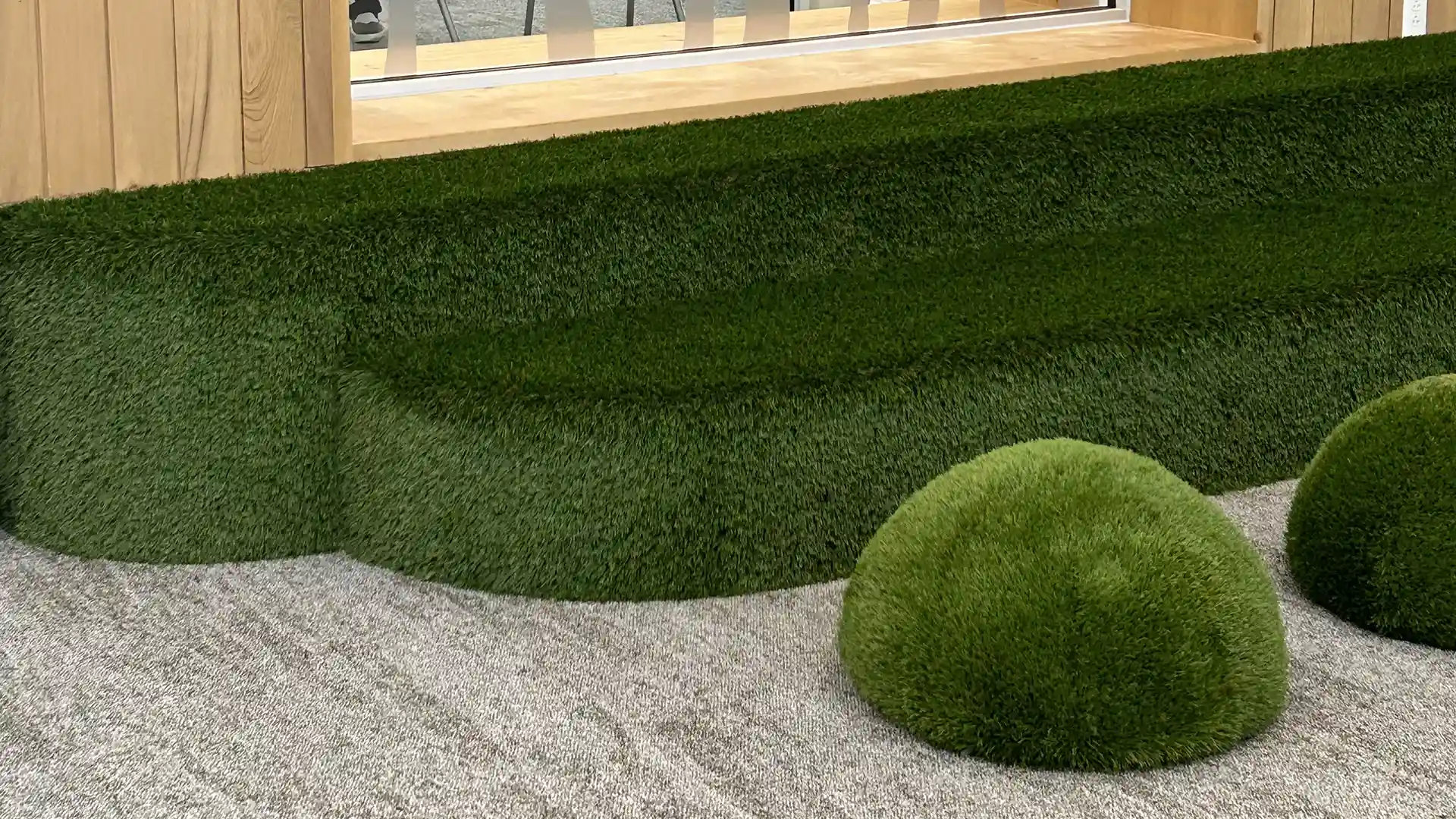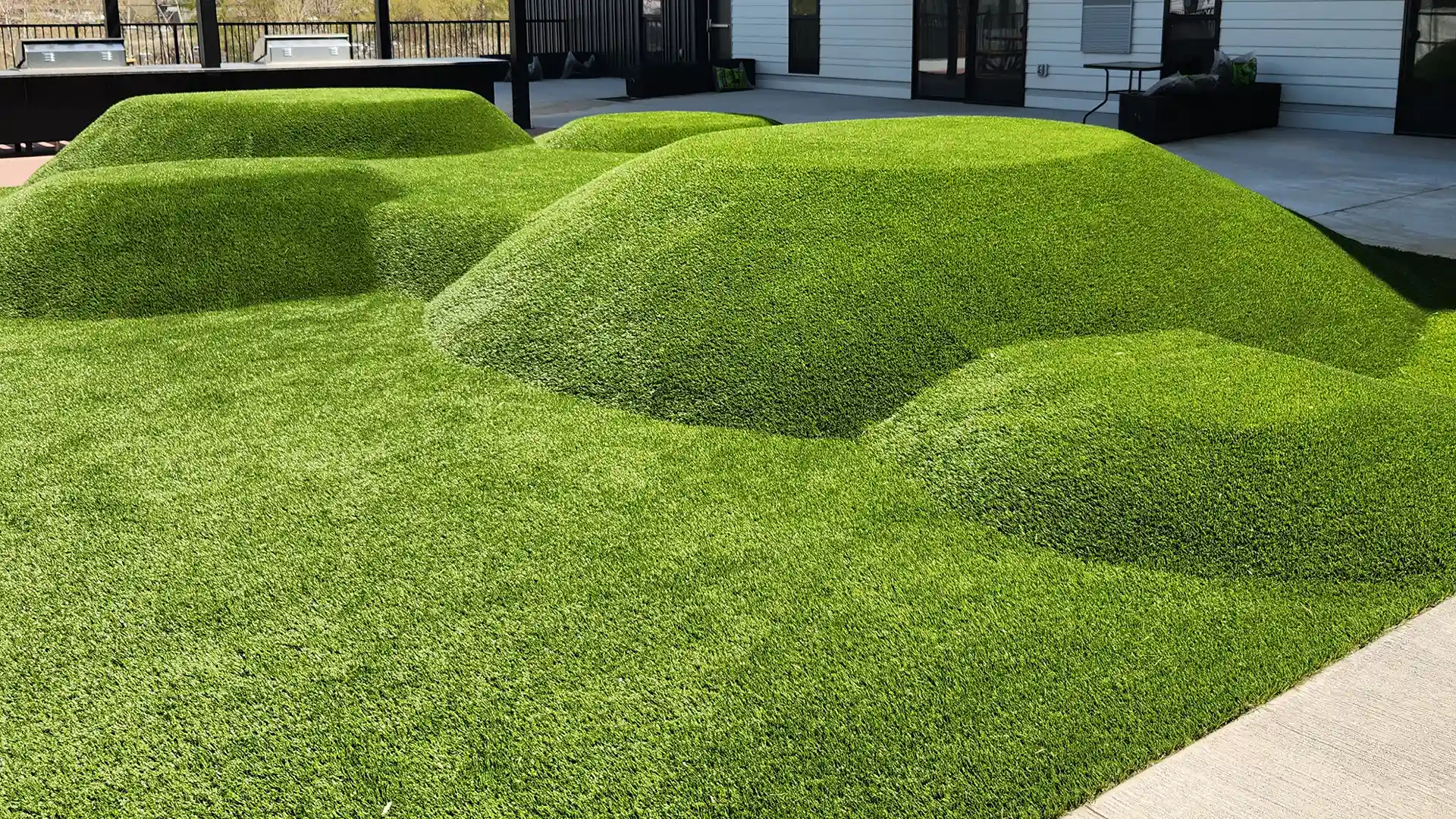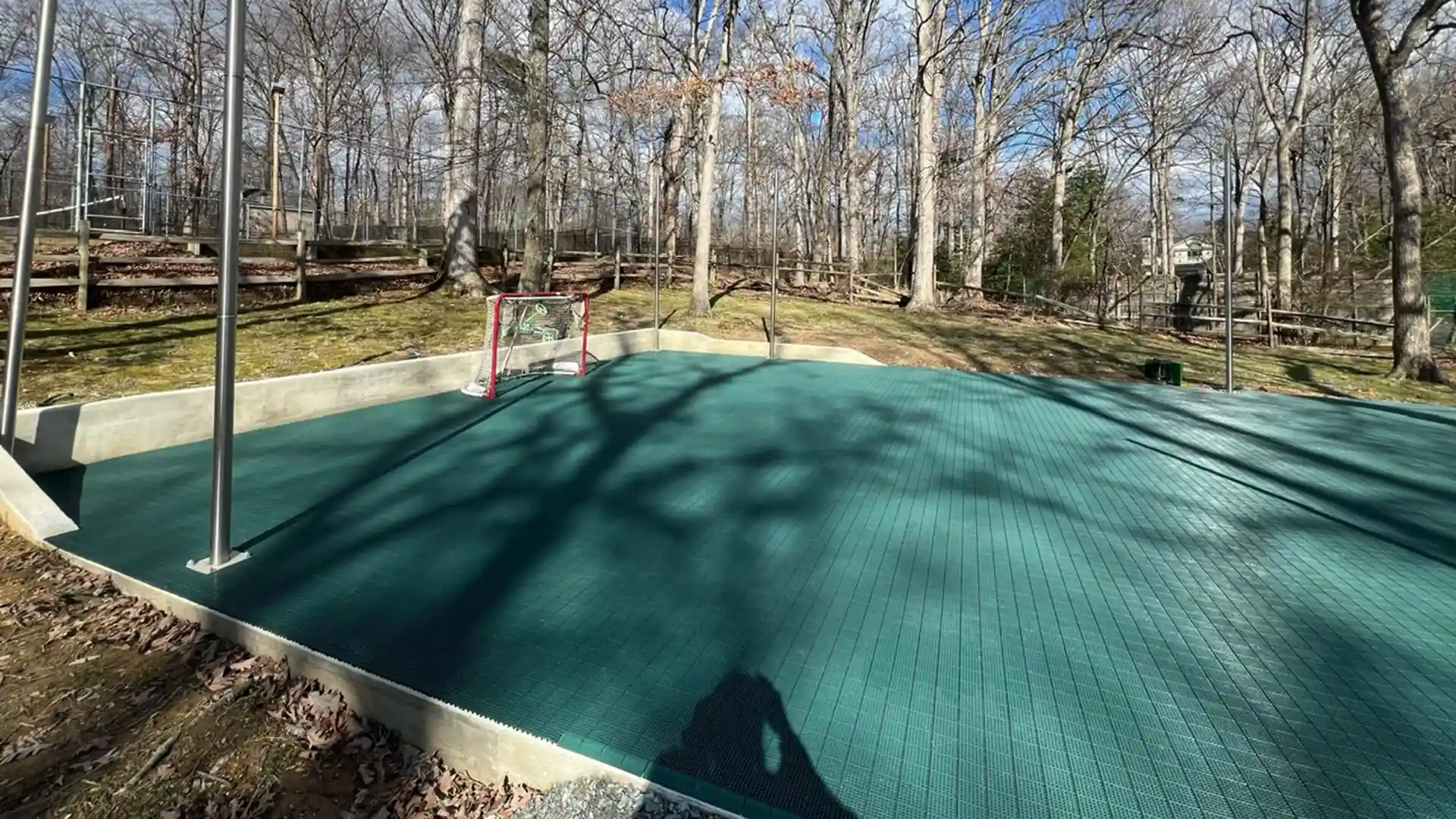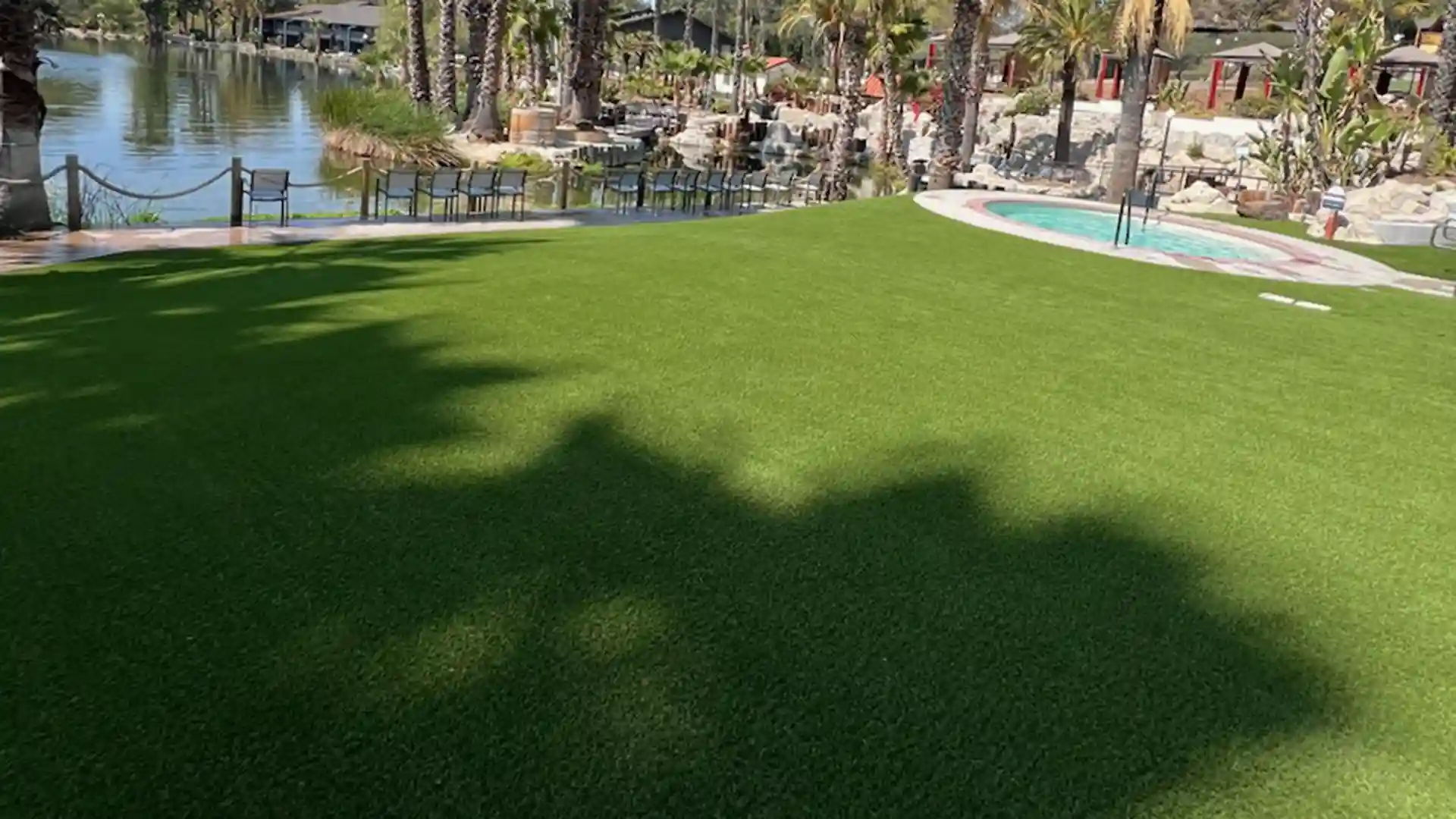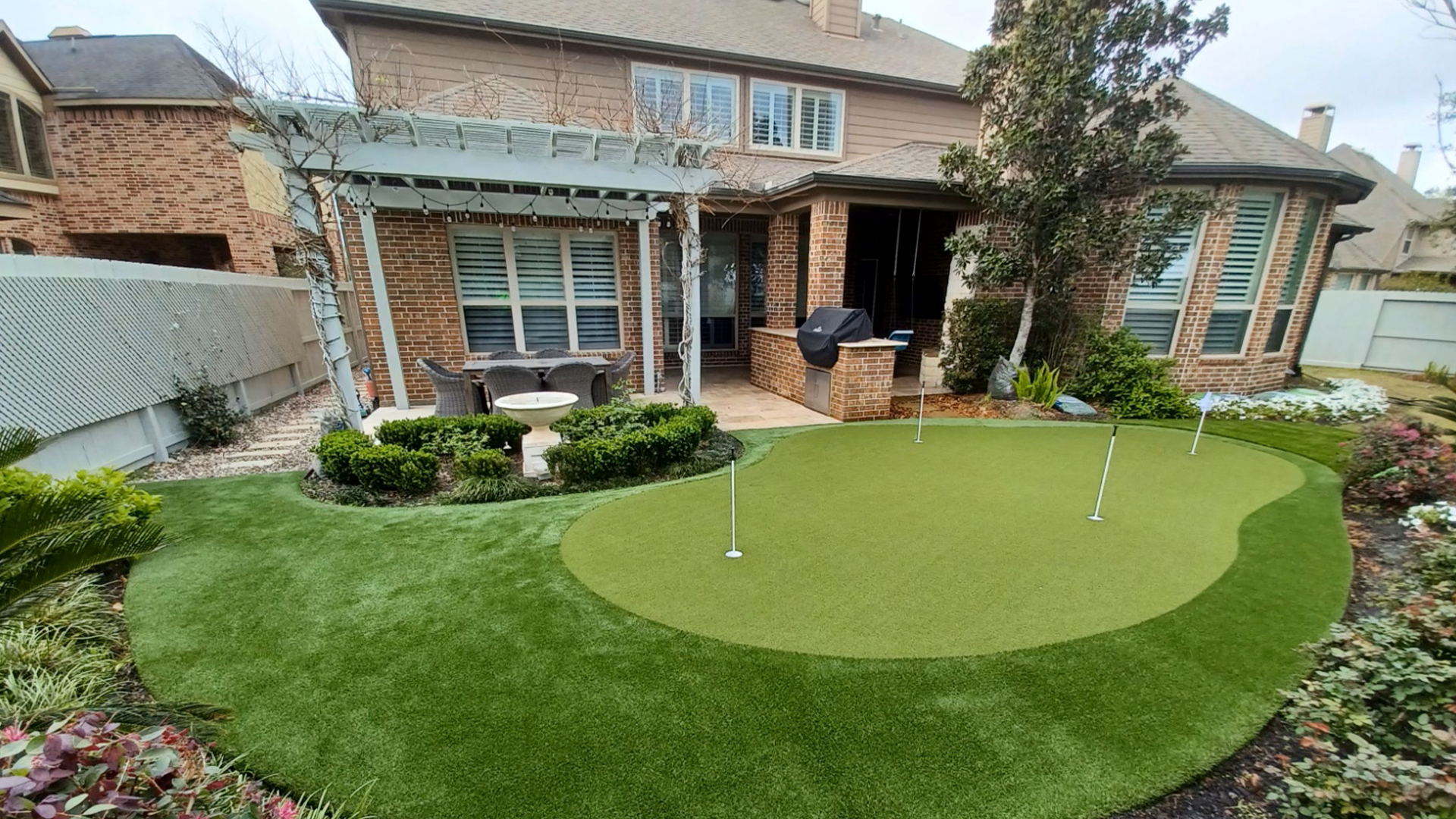
How to Maintain Your Artificial Grass All Year Round
Artificial grass stays green and pristine without mowing, watering, or fertilizing. Designed for durability, it drains efficiently and resists odors with minimal upkeep. While maintenance is easy, an everyday routine and seasonal care will keep your turf looking its best year-round. This guide explains how to maintain artificial grass to keep it clean, fresh, and long-lasting.
Turf Care Routine: Pets, Kids & Everyday Use
Artificial grass is easy to maintain, but regular cleaning keeps it fresh, safe, and long-lasting—especially in homes with pets and children.
How to care for artificial grass:
- Kid-Safe Cleaning: For spills, use mild soap or a diluted vinegar solution. Avoid harsh chemicals that can damage fibers.
- Use Turf-Friendly Mats: Place protective mats in entryways or under play equipment to reduce direct wear.
- Keep Drainage Clear: Rinse occasionally to prevent dust buildup and ensure efficient water flow.
Try this everyday artificial turf maintenance routine—it is practically effortless and can keep your artificial grass clean, soft, and safe for everyday use.
How To Maintain Artificial Grass: Seasonal Care Guide
Seasonal changes can bring unique artificial grass maintenance challenges. Our seasonal guide can help keep your turf functional, no matter the weather.
Spring: Freshen Up for Warmer Days
As temperatures rise, pollen, dust, and debris from winter can settle on your artificial lawn. This is the perfect time for a refresh.
How to maintain turf in spring:
- Rinse Away Winter Buildup: A garden hose is usually enough to wash away dust, pollen, and dirt that may have accumulated during colder months. If your turf has high traffic or pet use, a mild soap solution can help lift any lingering grime.
- Check Drainage Areas: Over time, small particles can collect in the base layers of your turf. Inspect drainage points and clear any blockages to ensure proper water flow before the rainy season.
- Inspect For Any Damage: If your turf has been exposed to harsh winter weather, now is a good time to check for seams that may need reinforcement or any infill that needs replenishing.
Spring cleaning keeps your artificial grass fresh and ready for increased outdoor activity.
Summer: Beat the Heat & Handle More Foot Traffic
Summer means backyard gatherings, kids playing outside, and pets spending more time on the lawn. While artificial grass is built to handle heavy use, a few simple steps will keep it in top shape during the hottest months.
Artificial lawn maintenance tips for the summer:
- Stay Pet-Friendly: Warmer temperatures can intensify odors from pet waste. Rinse pet areas more frequently and use enzyme-based cleaners to neutralize smells.
- Watch For Spills And Stains: Barbecues, pool chemicals, and sunscreen spills can leave residues on turf. Clean up spills quickly using mild detergent and water to prevent buildup.
- Limit Exposure to Extreme Heat: High temperatures won’t damage artificial grass, but placing grills, fire pits, or other heat sources directly on the turf might cause fibers to warp.
With these simple steps, your lawn will stay fresh and comfortable, even in peak summer heat.
Fall: Say Goodbye to Leaves & Debris
Fall brings cooler weather, falling leaves, twigs, and other organic debris. Artificial grass doesn’t need seasonal fertilizing or aeration like natural lawns, but it does benefit from regular upkeep during autumn.
How to care for artificial turf during fall:
- Clear Fallen Leaves Regularly: Unlike natural grass, artificial turf doesn’t decompose organic material. If leaves, twigs, or seeds pile up, they can trap moisture, encourage mold growth, and block drainage. Use a leaf blower or a soft-bristle rake to clear debris.
- Inspect For Weed Growth: Stray seeds carried by wind or animals can sometimes settle into your turf’s infill. If that happens, apply a non-toxic, turf-safe weed killer.
- Prepare For Winter: If you live in an area that experiences snow, ensure that your turf is in good condition before the colder months. Any existing drainage issues should be resolved before winter sets in.
Staying ahead of leaf buildup and maintaining proper drainage will keep your lawn in great shape as temperatures drop.
Winter: Handle Snow & Frost the Right Way
Winter can be a magical and inspiring time, where most of us hibernate indoors, sipping a cup of tea (or coffee or hot cocoa), reading a book, binge-watching TV, and making the most of our comfy home. The best artificial turf care for wintertime is preventive, as you don’t really need to go out in the cold—premium artificial turd can handle the winter season.
So, our wintertime care tips are mostly preventive, and include:
- Let Light Snow Melt Naturally: Rock salt and chemical de-icers can degrade turf fibers and backing materials. Instead, let ice thaw naturally or use a broom to brush off any light frost.
- Avoid Walking On Frozen Turf: Artificial grass doesn’t freeze, but ice can form on the surface, making it slippery. If that happens, avoid walking on the turf and contact a professional synthetic grass maintenance service to prevent damage.
- Use The Right Tools For Snow Removal: If heavy snow accumulates, gently remove it using a plastic shovel or a broom. Avoid using metal tools, as they can damage the fibers.
Of course, the last one does require some movement and venturing out of your comfy home, but we’re assuming you aren’t a bear in hibernation and do go outside occasionally. Remember—these precautions can protect your artificial grass and ensure a smooth transition into spring, so be sure to apply them as needed.
When to Call the Pros
Periodic professional care can help extend your turf’s lifespan and keep it looking its best. SYNLawn’s professional turf maintenance service goes beyond routine cleaning—providing deep cleaning, repairs, and rejuvenation for long-term performance.
Here’s what you can expect from a pro maintenance service:
- Deep Cleaning & Sanitization: Power brushing, odor removal, and turf-safe antimicrobial treatments.
- Debris & Leaf Removal: Clearing organic buildup that can block drainage.
- Fiber Rejuvenation: Brushing and grooming to lift matted areas.
- Infill Replenishment: Restoring cushioning for even and comfortable support.
- Drainage Optimization: Clearing blockages and optimizing water flow.
We recommend annual or biannual maintenance for most lawns and quarterly service for pet owners, high-traffic areas, and commercial properties. Contact our experts for more information on how to care for turf and keep it clean all year round.

